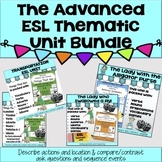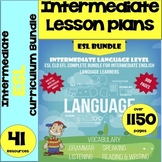Hello teachers.
Recently a teacher reached out and asked me about English Language Learners and teaching Reading to ELs. I thought my response to her would be interesting to others so here it is as a blog post!
We know that ESL instruction is an important part when we are trying to teach reading to ELs. I admit that it takes a bit of patience and creativity, but there are some simple tricks that work wonders.
It’s important to begin by introducing ESL learners to an all-encompassing approach to starting reading: the reading domain. This domain encompasses preparing ESL students, in listening comprehension, and written and oral skills.
In my district we believe that teaching Reading to ELs needs to be a team effort! As the ESL teacher I worked with the Title I reading specialist and the classroom teachers to achieve this complex task. We recognized that it is the ESL teachers main responsibility to teach ELs English and raise their English proficiency. This doesn’t always correlate with what is happening in reading. We went to work to determine who does what. This is what we came up with and I think it works well!
Teaching Reading to ELs – Assessment of Prior Knowledge – ESL Teacher and Reading Specialist
- Understand the students’ language proficiency levels and prior exposure to reading in English.
- Identify any specific challenges or strengths in phonemic awareness, vocabulary, and comprehension.
Building Phonemic Awareness – Depending on grade level – ESL Teacher, Reading Specialist and Classroom Teacher for early grades
- Start with phonemic awareness activities, focusing on sounds and their correspondence to letters (phonics).
- Use games, songs, and activities that emphasize rhyming, blending, and segmenting sounds.
Introducing Basic Vocabulary – Reading Specialist, and Classroom Teacher for early grades supported by ESL Teacher
- Teach essential sight words and high-frequency words that are foundational to reading.
- Use visual aids, gestures, and realia to reinforce meaning and context.
Teaching Reading to ELs – Reading Aloud- Classroom Teacher
- Model fluent reading and correct pronunciation through read-aloud sessions.
- Use engaging and culturally relevant texts to maintain interest.
Phonics Instruction- Reading Specialist, and Classroom Teacher for early grades
- Teach phonics rules systematically, starting with simple consonant-vowel-consonant (CVC) words and progressing to more complex patterns.
- Practice decoding skills through word families and word sorts.
Teaching Reading to ELs Vocabulary Development – ESL Teacher , Reading Specialist, and Classroom Teacher
- Expand vocabulary through context-based learning and thematic units.
- Encourage students to use new words in speaking and writing activities.
Guided Reading and Scaffolded Practice – Reading Specialist, and Classroom Teacher

- Provide guided reading sessions where students read texts at their instructional level with teacher support.
- Teaching Reading Strategies
- Scaffold comprehension strategies such as predicting, questioning, summarizing, and making connections.
Independent Reading – Classroom Teacher supported by Reading Specialist for materials

- Foster a love for reading by providing access to books at appropriate reading levels.
- Encourage independent reading time and provide opportunities for students to choose their own books.
Writing Practice – Classroom Teacher
- Integrate reading and writing by having students write about what they read.
- Teach writing conventions such as sentence structure, punctuation, and grammar in context.
Assessment and Feedback – Classroom Teacher and Reading Specialist
- Use ongoing assessments such as running records, comprehension checks, and fluency monitoring to track progress.
- Provide constructive feedback and celebrate achievements to motivate continued learning.
Home-School Connection – Classroom Teacher
- Involve parents and guardians by sharing strategies for supporting reading at home.
- Provide resources and recommendations for bilingual books or audio materials.
Differentiation and Individualized Support – ESL Teacher, Reading Specialist, and Classroom Teacher
- Differentiate instruction based on students’ learning styles, interests, and language proficiency levels.
- Offer additional support through small group interventions or one-on-one sessions as needed.
Cultural Sensitivity and Inclusivity – ESL Teacher , Reading Specialist, and Classroom Teacher
- Incorporate diverse texts and perspectives that reflect students’ backgrounds and experiences.
- Create a supportive classroom environment where students feel valued and encouraged to take risks in their language learning journey.
By following these steps, educators can create a comprehensive and supportive environment for elementary ELLs to develop their reading skills effectively. Adjustments should be made based on individual student needs and progress throughout the learning process.
Leave your comment below! We would love to hear from you!

Lori
Looking for time-saving tips and tricks for teaching math and ESL? Sign up for my email newsletter to get free teaching resources and helpful strategies right to your inbox! Click here to sign up.

ESL Year-Long – ELL Lesson Plans – ESL Curriculum – English Newcomer Activities

ESL Advanced Level Thematic BUNDLE – ESL Curriculum – ESL vocabulary – ESL
June – ESL Lesson Plans Bundle – ESL Curriculum – Kindergarten thru 6th

ESL Curriculum for Intermediate ELLs – ESL Vocabulary – ESL Lesson Plans


No comments:
Post a Comment